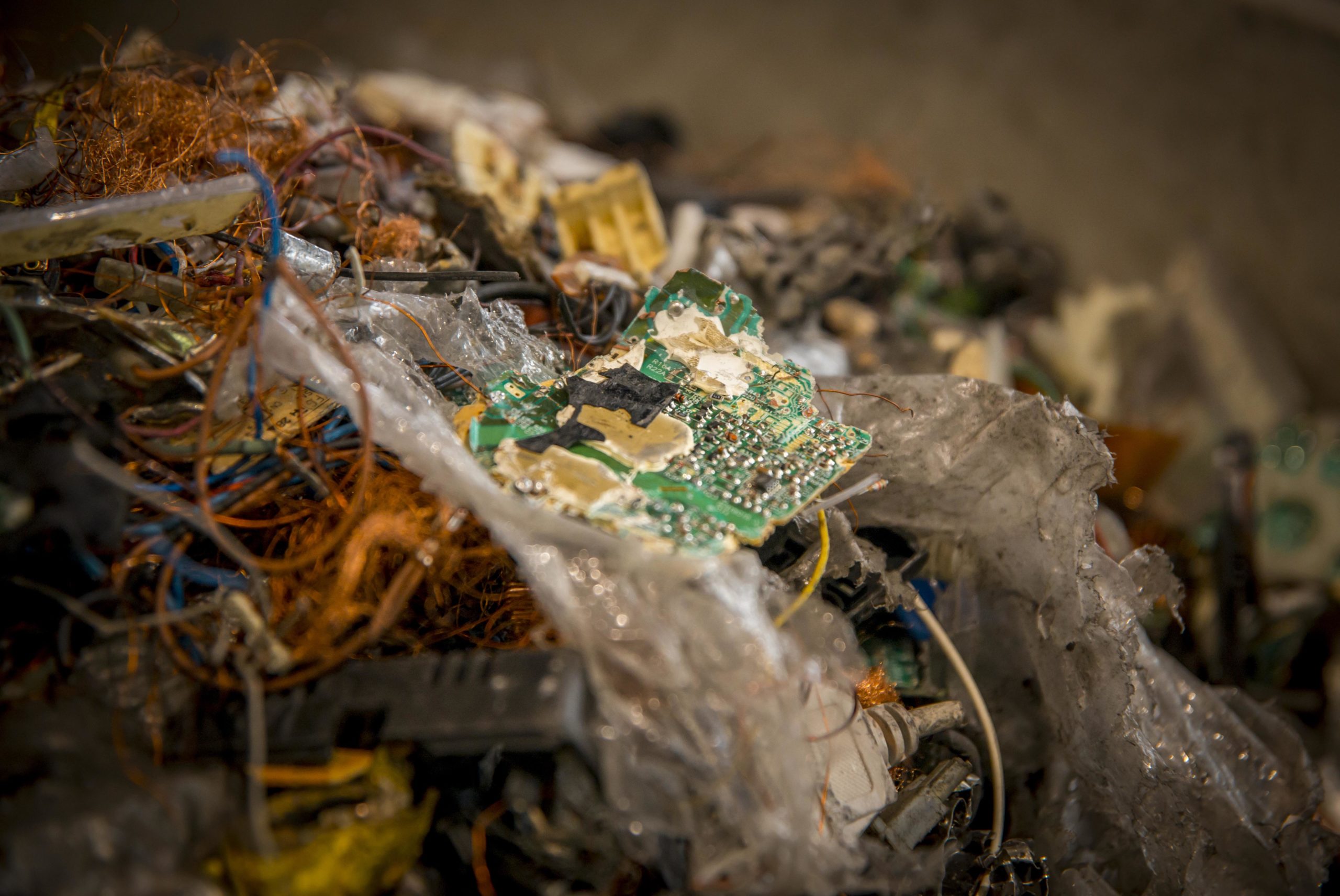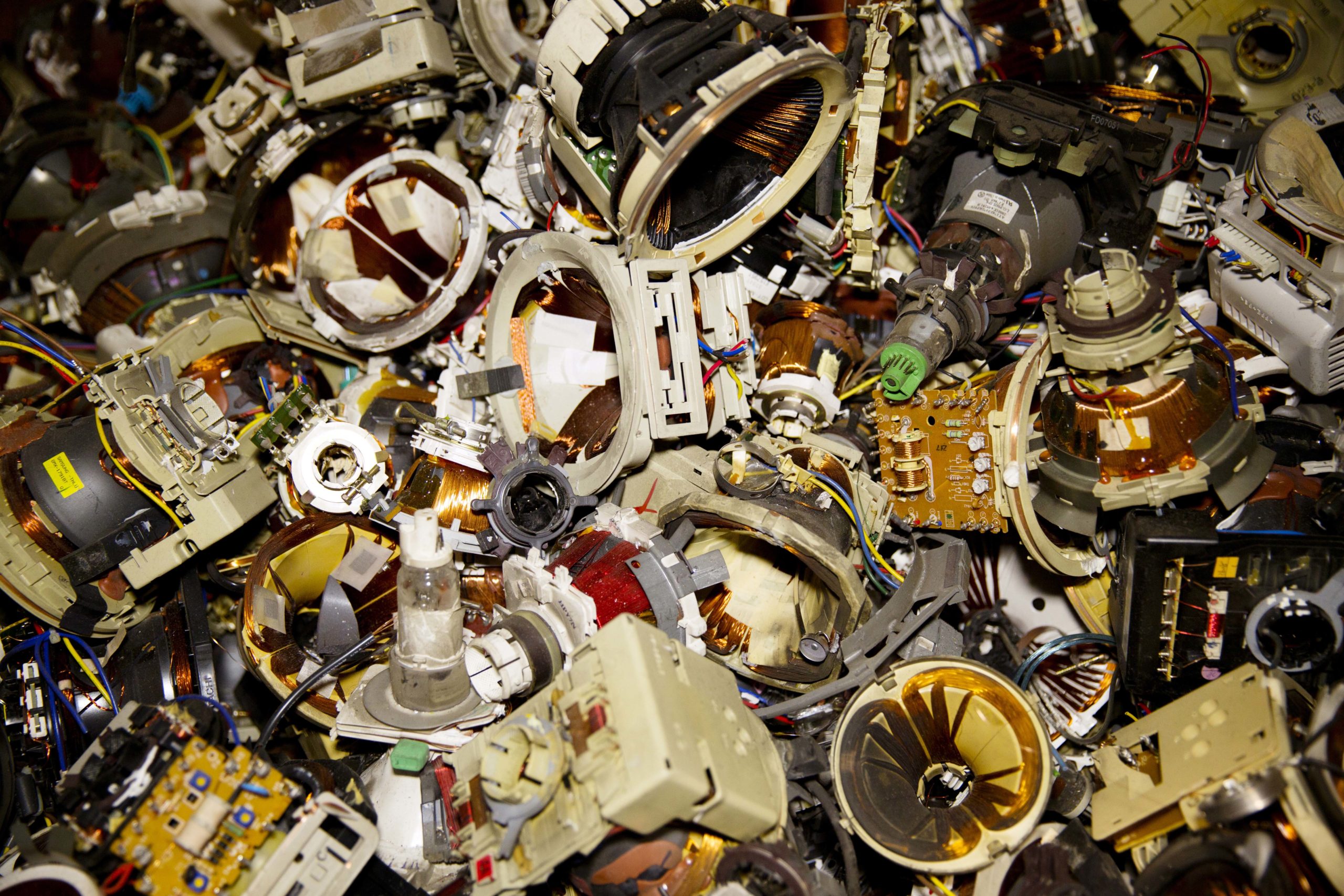OPINION: According to the UN’s Global E-scrap Monitor 2020, global e-scrap will reach 74 million metric tons (Mt) by 2030, making it the fastest growing waste stream in the world.

E-scrap [otherwise known as waste electrical and electronic equipment (WEEE)] typically contains a complex mix of materials, some of which are hazardous and must therefore be managed carefully.
Furthermore, e-scrap often contains a significant amount of valuable and scarce raw materials, such as stainless steel, aluminium, gold, silver, copper, brass, indium and platinum.
Europe is the third-largest generator of e-scrap behind China and North and South America and has the highest collection and recycling rates at 42.5%. There are two directives governing the management of e-scrap in the EU: the WEEE (Waste from Electrical and Electronic Equipment) Directive and the RoHS (Restriction of Hazardous Substances) Directive.
Pre-shredding prior to sensor-based sorting
The overall goal of e-scrap processors is to cost-effectively recover valuable secondary raw materials which are as pure as possible, and which would otherwise be sent to landfill or poorly processed.
E-scrap treatment can vary hugely depending on the material type and the technology used. Some facilities use large-scale shredding technologies while others manually dismantle the material or use automation. Some use a combination of both.

Shredding e-scrap prior to sorting with any sensor-based sorting technology is essential. Using pre-shredding, hammer mills or vertical shredders, valuable components such as PCBs, cables and valuable metals can be recovered, and batteries, capacitors and other harmful materials can be safely removed.
Using flexible sensor-based sorting technology to target different materials
A large-scale e-scrap recycling plant typically includes a first step of pre-shredding and the manual removal of hazardous material such as batteries and easy-to-pick valuables like large PCBs. A second shredding step is normally used to downsize the material to make it suitable for further sorting. A magnet removes the ferrous fraction and then the material is screened to ensure more efficient sensor-based sorting later in the process. Once pre-shredding has taken place, a number of flexible sensor-based sorting solutions can be used to increase the product yield, generate material fractions of significantly increased purity and detect hazardous substances.

- Targeting aluminium – Typically, an eddy current separator is used to remove the non-ferrous metals (a mix of aluminium, copper, brass and PCBs). Once these are removed, an X-TRACT unit can be introduced to achieve extremely accurate separation of high purity aluminium from heavy metals. X-TRACT is a software-based solution which uses X-ray technology to detect materials based on their density, guaranteeing premium remelt quality recycled aluminium by ejecting the heavy metal contaminants such as magnesium.
- Targeting valuable heavy non-ferrous metals – Once the X-TRACT has separated the aluminium from heavy metals, the remaining mix of heavy non-ferrous metals can then be further sorted using a COMBISENSE unit which sorts metals such as copper, brass, grey metals and PCBs by colour and electromagnetic properties. By passing the material through a series of further sorting steps using the COMBISENSE unit the purity of the different target heavy non-ferrous metals end products, such as PCBs and copper, can be significantly increased. The metal content, colour, shape and size of each passing object is identified, and the targeted fractions recovered.
- Targeting metals from non-metals – After the infeed material has passed through an eddy current separator, the dropped material consists of plastics and other non-metals, but also includes metals that are not removed by the eddy current separator, such as stainless steel, copper wires, compounds of plastic and metals, and some PCB parts. At this stage, our FINDER unit can be used to recover all metals from the non-metals. This minimises the loss of valuables into the plastics and ensures the quality of the plastic end products at a later stage. The FINDER unit is extremely flexible and uses electromagnetic fields to distinguish between stainless steel and copper wire and produce a clean non-metal fraction.
- Targeting valuable plastics – The sorting and recovery of plastics from e-scrap will depend on which fractions are required and the volumes to be processed. Different combinations of sensors can be used to identify and separate different plastics, transforming the material into reusable granules. E-scrap contains hazardous substances or persistent organic pollutants (POPs), such as brominated flame retardants, which must not be reused or recycled. Our X-TRACT technology can remove these materials and our AUTOSORT NIR technology can remove the remaining visible polymers in the <1000ppm brominated content. The non-visible polymers can then be dried and sorted by polymer type using MIR spectroscopy into individual polymer groups for re-sale.
Latest developments in plant design
In recent years, we have worked with customers to introduce some new and innovative alternative applications of our technology.
We recently installed an AUTOSORT unit which uses a visual spectrometer sensor to remove visible copper, such as wire bundles attached to iron or small engines. When incorporated after magnetic separation, this solution makes the ferrous fraction much cleaner and far more likely to pass visual inspections at the steel mill.
Instead of using an eddy current separator first directly after the magnet, some of our customers have used our FINDER unit to recover all the metals, including the non-ferrous metals such as aluminum and copper. This is achieved using a Laser Object Detection (LOD) sensor within the FINDER unit. The bulk of the material – the plastics – is therefore removed upfront which means there is less material to go through the later sorting steps. Consequently, very few metals are lost, it is much easier to upgrade the metals and less footprint is required for equipment as only smaller sorting units are needed.
Finally, another new development implemented by some customers is sorting out PCBs before they enter the eddy current separator using either our COMBISENSE unit or our AUTOSORT unit. Recovering the PCBs in just one step at this stage eliminates the need to sort them from both the non-ferrous metals and the stainless steel and copper fraction. This potentially saves a sorting step and again makes the later sorting steps easier and more efficient.
Greater separation of e-scrap is a means for processors to gain a more robust trading position in the global marketplace. As sensor-based sorting solutions can be incorporated at different stages in the process, they are very flexible and can be used to target different valuable monofractions. Today, many of our customers are using our technology to target copper and other precious metals due to their high market value.







Subscribe for free